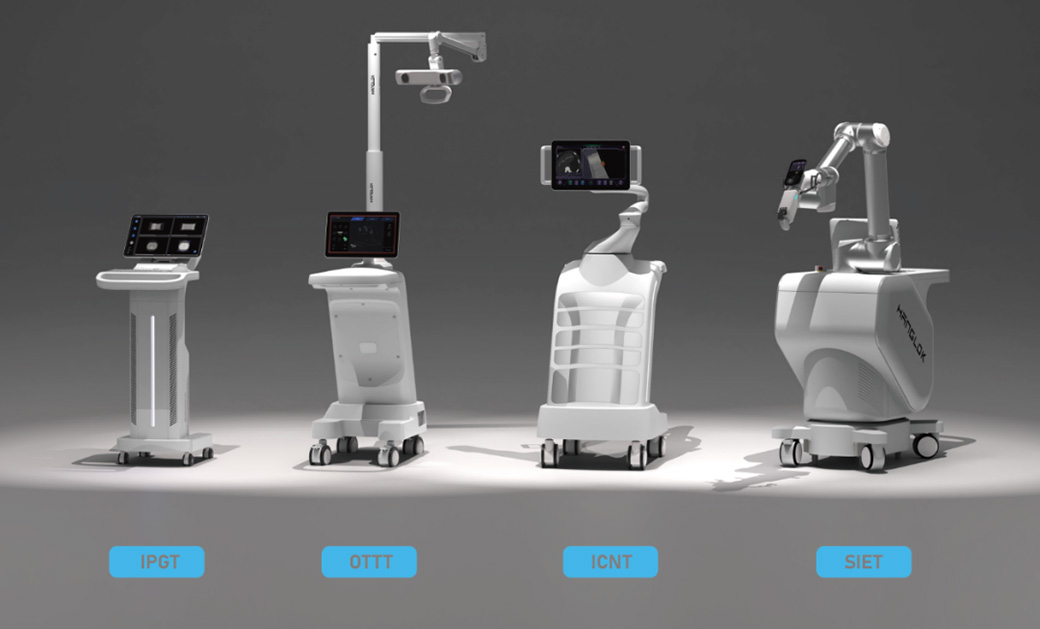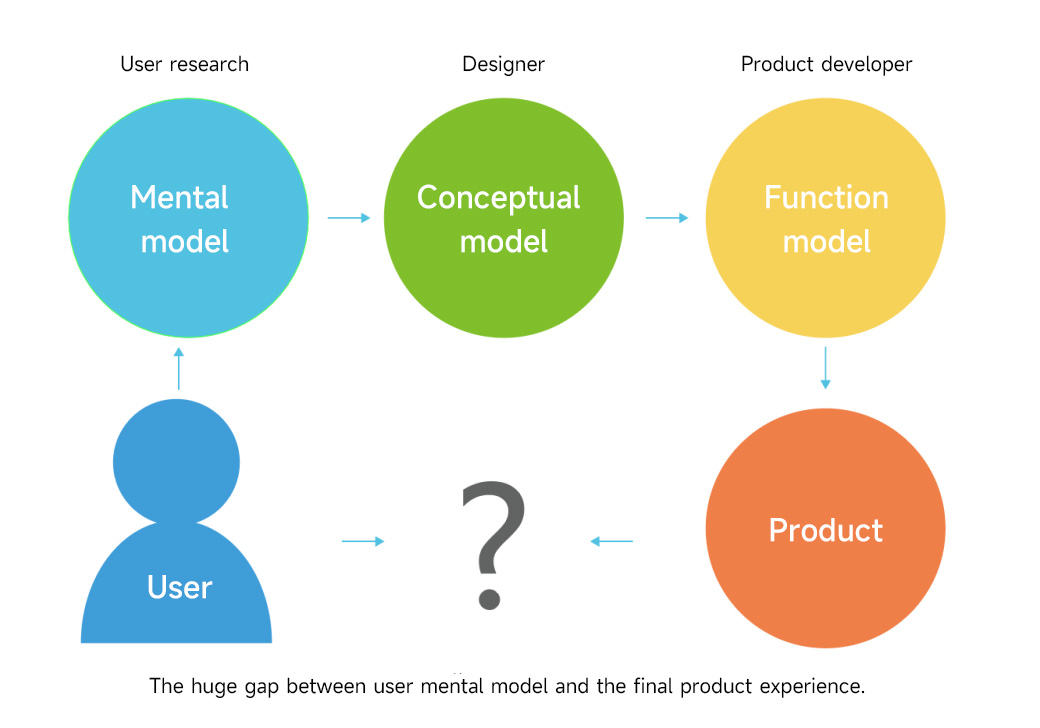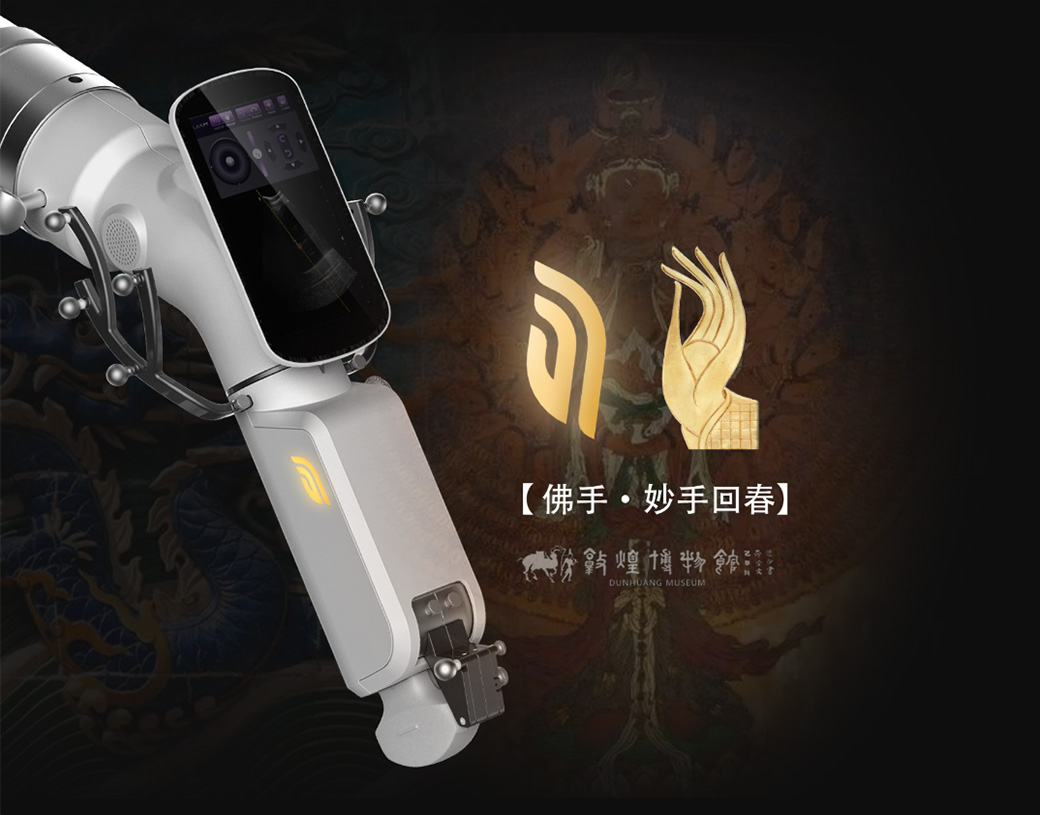Hanglok’s "SGNIO- Puncture interventional surgery robot
for Liver Solid tumors" (hereinafter referred to as "SGNIO"),
for the improvement of doctor's surgical experience and novel appearance
design, won the gold medal of the concept design group of the 11th
"Governor's Cup" Industrial design Competition in Guangdong Province.
"Governor's Cup" Industrial Design Competition is
the highest level of industrial design awards in Guangdong Province, and is
also one of the earliest and most influential industrial design competitions in
China. It has always been renowned at home and abroad for its deepest
industrial penetration, the largest number of entries, the most practical
results, and the strongest sense of professional belonging of industrial
designers.
Analysis of SGNIO
design ideas
Hanglok has always regarded industrial design as an important
means of innovation, and has taken creating excellent experience for doctors
and patients as one of the important goals of robot research and development. Hanglok
not only focuses on the specific product design, but also regards the surgical
process as a service design, fully considering the complete experience path of
doctors and patients before and after surgery, so as to reduce the operating
burden of doctors and improve the operation efficiency of the department.
The products of traditional medical manufacturing enterprises
are often based on the realization idea of the functional model of the research
and development personnel, and only build the framework of the product in the
form of the most easy to achieve the function. The result is that doctors need
to spend more energy to adapt to the product, and bring poor experience to the
users. Therefore, Hanglok conducted in-depth user research and user empathy in
the early stage of product development, extracted the user's mental model, and
then designed the conceptual model on this basis. Then, the conceptual model is
used as the standard to realize and improve the final function, so that the
product will not deviate from the user's needs as far as possible. This
requires us to continuously optimize and polish the entire product development
process closely around the user experience, so that the product can adapt to
the doctor's operating habits and psychological expectations, rather than
increasing the difficulty of the doctor's operation. In the research and
development process, we will continue to conduct user testing and jointly develop
with doctors, in order to have a good enough use experience after the product
is finalized.
When
designing the surgical robot, Hanglok deeply investigated the process and pain
points of traditional surgery, fully considered every contact point of the
doctor in the surgical process, and carefully honed every small operation of
the doctor, so as to improve the efficiency and experience of the entire use
process. The following figure shows the surgical process of SGNIO, which has
been designed and validated to reduce the doctor's operation steps and time,
allowing the robot to serve the surgical department more efficiently.
In addition to the design of user experience, Hanglok is also
constantly exploring the appearance design style that is most suitable for
surgical robots. Under the wave of Industry 4.0, the appearance of mainstream
medical products emphasizes the design of the structure suitable for mass
production, and follows the traditional Bauhaus concept of "function
determines form" for manufacturing. In recent years, China's surgical
robot industry is rising rapidly, and what is the most suitable style of
surgical robot in China?
We believe that industrial design in the new era should integrate modern
medicine, engineering methods and the essence of Chinese humanities and arts
such as Confucianism, Buddhism, Taoism and Medicine, and inherit traditional
culture in product design. However, this can not be a simple texture and
pattern tracing, should refine its connotation, to create a robot design style
with Chinese characteristics.
The following describes the end of the robotic arm of SGNIO. Through the
meaning of "dragon’s head", it can not only reduce the fear of
patients in the operation of the instrument, but also highlight the seriousness
and gravitas of the operation. It is inspired by the white jade dragon head of
the early Ming Dynasty XI(觽). "XI(觽)" is a tool worn by ancient people to untie the knot of the
belt. Shuoyuan Xiuwen(《说苑·修文篇》)said: "Those who can cure trouble and resolve disorder pay XI(觽)." It can be seen that XI(觽)in the eyes of ancient people has the meaning of treating
disturbance and resolving disorder, which is exactly in line with the goal of
ablating tumors during puncture interventional surgery and reducing the risk of
cancer.
At the same time, the indicator light at the end of the robot
arm is designed in the position of the "dragon's eye", the so-called
"adding finishing touch"(“画龙点睛”), which is where
the spirit of the robot is located. The shape of the lamp is not only the
evolution of the shape of the eyes, but also the integration of the intention
of "Buddha's hand"(“佛手”)in Dunhuang murals,
implying the meaning of "magical hands bring back of life"(“妙手回春”).
In addition, the robot's accessories, such as the design of
the needle holder, also draw on the intention of "phoenix hairpin"(“凤簪”)and "jade dragon"(“玉龙”)in the
cultural relics. Among them, the phoenix hairpin was unearthed in the tomb of
the king of Liangzhuang, which is a ritual object in the Ming Dynasty. The
hairpin head is hollow single phoenix, and the phoenix stands on the hollow
auspicious cloud. Jade Dragon is carved from dark green Xiuyan jade, with
smooth and clean body, vivid shape and exquisite carving, and is known as the
"Three Star Tara Red Mountain Culture Jade Dragon"(“三星塔拉红山文化玉龙”). The integration of these two classical intentions makes the
appearance design of surgical robots more solid and grounded. It is not only a
tool to be used, but also a spiritual connection with Chinese doctors.
The above is Hagnlok on SGNIO part of the design ideas
analysis. Of course, the current design still has a lot to iterate and upgrade.
One of our goals is to bring more value to doctors, hospitals and patients
through design innovation.





